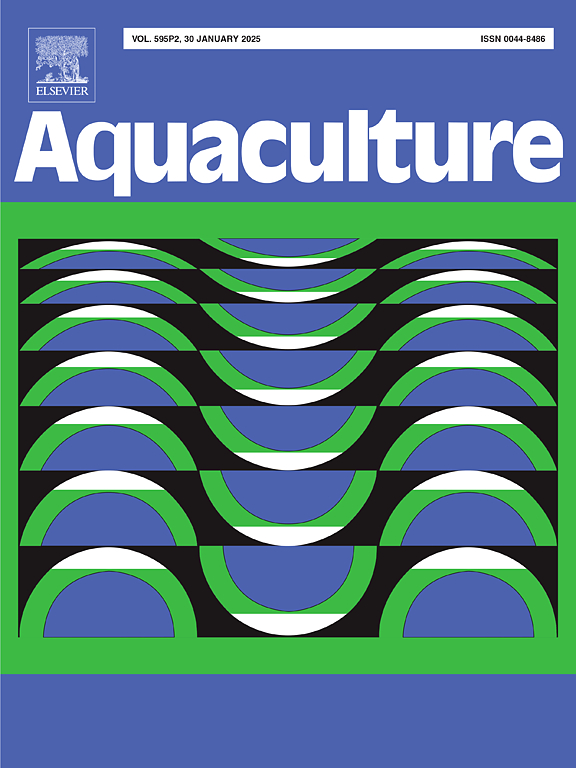Effects of three polychaete species on growth and reproductive performance, biochemical indices, and histological condition of differing tissues in male broodstock of Pacific white shrimp, Litopenaeus vannamei
IF 3.9
1区 农林科学
Q1 FISHERIES
引用次数: 0
Abstract
A 42-day feeding trial was conducted to evaluate the potential of three polychaetes species to serve as fresh-live maturation diets in terms of growth and reproductive performance, biochemical indices and histological condition of specific tissues in Pacific white shrimp (Litopenaeus vannamei) male broodstock. Two novel polychaete species, Marphysa maxidenticulata and Perinereis nuntia, and a traditional species, Perinereis aibuhitensis, were used as individual diets. A total of 225 healthy male broodstock shrimp were randomly divided into three groups (initial weight 50.40 ± 0.23 g). The nutritional composition of the three polychaete species showed that M. maxidenticulata had the highest crude protein and polyunsaturated fatty acid (FA) content. The results showed that broodstock fed M. maxidenticulata had the highest weight gain and specific growth rates, hepatosomatic (HIS) and gonadosomatic indices (GSI), and molting, with lowest melanization rates. In the M. maxidenticulata group, hepatic and lipoprotein lipases, lipase, trypsin, superoxide dismutase, catalase, glutathione peroxidase, and lysozyme activity were the highest, whereas the malondialdehyde concentration was the lowest. Additionally, triglyceride and testosterone contents were significantly higher in broodstock fed M. maxidenticulata than in the other treatments, particularly in the serum and testes. Furthermore, the histological analysis of the hepatopancreas and gonads revealed that broodstock fed M. maxidenticulata had the largest and most developed B and R cells in the hepatic tubules, the greatest number of seminiferous tubules, the highest sperm density in the testicular lobules, and the largest areas of sperm mass and primary spermatophore layers in the medial vas deferens. The experimental results showed that M. maxidenticulata is a potential new fresh-live diet for male L. vannamei broodstock, and that higher levels of protein and polyunsaturated FAs in M. maxidenticulata can maximize growth, reproductive performance, digestive ability, and antioxidant and immune abilities.
求助全文
约1分钟内获得全文
求助全文
来源期刊

Aquaculture
农林科学-海洋与淡水生物学
CiteScore
8.60
自引率
17.80%
发文量
1246
审稿时长
56 days
期刊介绍:
Aquaculture is an international journal for the exploration, improvement and management of all freshwater and marine food resources. It publishes novel and innovative research of world-wide interest on farming of aquatic organisms, which includes finfish, mollusks, crustaceans and aquatic plants for human consumption. Research on ornamentals is not a focus of the Journal. Aquaculture only publishes papers with a clear relevance to improving aquaculture practices or a potential application.
 求助内容:
求助内容: 应助结果提醒方式:
应助结果提醒方式:


